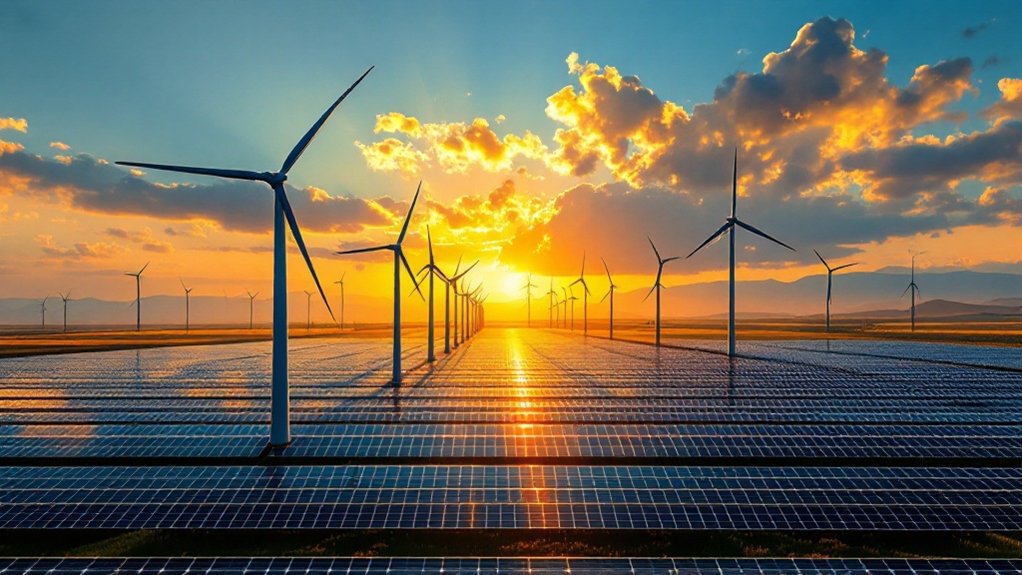
What Are the Latest Breakthroughs in Wind Power?
Recent advancements in wind power have shifted the landscape of renewable energy. Innovations in turbine design and the development of floating wind farms have gained attention. Enhanced energy storage solutions and smart grid integration are also emerging. In addition, the adoption of advanced materials and predictive maintenance technologies is optimizing performance. As these breakthroughs unfold, they raise questions about the future of wind energy and its role in a sustainable energy mix.
Innovations in Turbine Design
As the demand for renewable energy continues to rise, innovations in turbine design have emerged as a critical focus in the wind power sector. Engineers are now developing larger, more efficient blades that can capture wind energy at lower speeds, thereby maximizing energy production. Enhanced materials, such as lightweight composites, are contributing to improved durability and performance. Advanced aerodynamics are being implemented to minimize noise and reduce turbulence, enabling turbines to operate more effectively in diverse environments. Additionally, integrated sensor technology is allowing for real-time monitoring and predictive maintenance, which enhances reliability and reduces downtime. These innovations not only aim to increase energy output but also seek to lower costs, ultimately making wind energy a more viable option in the global energy landscape. Furthermore, the transition to renewable energy sources is essential for achieving a cleaner planet.
Floating Wind Farms
Floating wind farms represent a transformative approach to harnessing wind energy in deep-water locations previously deemed impractical for traditional fixed turbines. These innovative structures are anchored to the seabed and can be deployed in areas with higher wind speeds, maximizing energy generation potential. By utilizing advanced floating platform technologies, such as spar-buoy and semi-submersible designs, these farms can withstand harsh marine conditions while minimizing environmental impact. Additionally, floating wind farms facilitate the expansion of renewable energy infrastructure without the limitations imposed by shallow coastal waters. As a result, they offer an effective solution for meeting increasing energy demands while contributing to global sustainability goals. The development of floating wind farms marks a significant advancement in the renewable energy sector, further promoting sustainable practices that support environmental protection and resource conservation.
Enhanced Energy Storage Solutions
The advancement of energy storage solutions is essential for maximizing the efficiency of wind power. Innovations in advanced battery technologies, hybrid storage systems, and grid integration are emerging as key components in this evolution. These developments promise to enhance the reliability and effectiveness of wind energy systems in meeting demand. Additionally, remote work trends are influencing the way companies approach energy management and sustainability initiatives.
Advanced Battery Technologies
Innovations in advanced battery technologies are transforming energy storage solutions, essential for maximizing the efficiency of wind power. Recent developments focus on increasing energy density and reducing costs, making batteries more viable for large-scale applications. Lithium-ion batteries continue to dominate, but alternative chemistries, such as solid-state and flow batteries, are gaining traction due to their safety and longevity. These advancements enable better integration of renewable energy sources, allowing for effective storage of excess wind energy generated during peak production times. Additionally, enhanced charging capabilities reduce downtime, ensuring a steady power supply. As these technologies evolve, they promise to support the growing demand for reliable and sustainable energy storage, ultimately enhancing the overall performance of wind power systems.
Hybrid Storage Systems
Hybrid storage systems represent a significant advancement in energy storage solutions, combining the strengths of various technologies to optimize performance. By integrating batteries with other storage methods such as supercapacitors or flywheels, these systems enhance energy efficiency and responsiveness. This synergy allows for rapid energy discharge during peak demand while maintaining a stable supply during low production periods. The dual functionality of hybrid systems mitigates the limitations of individual storage technologies, offering improved cycle life and reduced degradation. Additionally, they can better handle fluctuations in energy generation, which is essential for wind power applications. As these systems evolve, their role in stabilizing renewable energy sources is expected to become increasingly critical, driving further innovation in the wind power sector.
Grid Integration Innovations
Advancements in grid integration are paving the way for enhanced energy storage solutions that greatly improve the efficiency and reliability of wind power systems. Innovations such as advanced battery technologies, including solid-state and flow batteries, enable greater energy density and faster charging capabilities. Additionally, the deployment of artificial intelligence and machine learning algorithms optimizes energy management, predicting demand and supply fluctuations more accurately. Moreover, integration with smart grids allows for better distribution and utilization of stored energy, minimizing waste. These developments not only enhance the stability of wind energy but also facilitate its incorporation into existing energy infrastructures. As a result, the shift towards sustainable energy becomes more viable, with wind power playing an essential role in a balanced energy portfolio.
Smart Grid Integration
As the demand for renewable energy sources continues to rise, the integration of wind power into smart grid systems has become increasingly essential. Smart grids utilize advanced technologies to enhance the efficiency and reliability of electricity distribution. This integration allows for real-time monitoring and management of energy flow, enabling a more responsive and flexible energy infrastructure. Wind energy can be better harnessed through predictive analytics, optimizing output based on weather patterns and demand fluctuations. Additionally, smart grids facilitate the incorporation of energy storage solutions, which help balance supply and demand, ensuring stability in the power supply. Overall, the integration of wind power into smart grid systems represents a significant advance in creating sustainable energy solutions. Practicing mindful breathing during periods of high demand can also help individuals manage their energy consumption more consciously.
Advanced Materials for Turbine Blades
Recent advancements in turbine blade technology focus on the use of lightweight composite materials and enhanced durability coatings. These innovations aim to improve the efficiency and lifespan of wind turbines, addressing both performance and maintenance challenges. By incorporating these advanced materials, the wind power sector can enhance energy output while reducing operational costs. Moreover, these developments align with the principles of minimalism in design, emphasizing the importance of efficiency and purpose in engineering solutions.
Lightweight Composite Materials
A surge in the development of lightweight composite materials is transforming turbine blade design in the wind power sector. These advanced materials, often comprising a combination of fibers and resins, considerably reduce the overall weight of turbine blades while maintaining structural integrity. Their reduced mass enhances efficiency, allowing for larger blades that capture more wind energy. Additionally, lightweight composites facilitate easier transportation and installation, minimizing logistical challenges associated with traditional materials. The flexibility in design offered by these composites enables engineers to innovate blade shapes that optimize aerodynamic performance. As renewable energy continues to gain importance, the adoption of lightweight composite materials is poised to play a critical role in enhancing the sustainability and effectiveness of wind power generation.
Enhanced Durability Coatings
Enhanced durability coatings are revolutionizing the longevity and performance of turbine blades in the wind power industry. These advanced materials are engineered to withstand extreme environmental conditions, including high winds, moisture, and temperature fluctuations. By greatly reducing wear and tear, these coatings enhance blade efficiency and reduce maintenance costs. Innovations such as nanotechnology and polymer blends are being utilized to create coatings that not only protect against erosion but also improve aerodynamic properties. In addition, the application of self-healing materials is gaining traction, allowing minor damages to repair themselves over time. Overall, enhanced durability coatings contribute to more reliable and efficient wind turbines, ultimately supporting the shift to sustainable energy sources while maximizing the lifespan of critical wind power components.
Vertical Axis Wind Turbines
While traditional horizontal axis wind turbines dominate the landscape, vertical axis wind turbines (VAWTs) have emerged as a promising alternative, particularly in urban environments. VAWTs feature a unique design that allows them to capture wind from any direction, making them ideal for areas with turbulent wind flows. Their compact structure often requires less space, facilitating installation in crowded settings. Recent advancements in materials and aerodynamics have enhanced their efficiency and durability, contributing to a decrease in maintenance costs. Additionally, VAWTs tend to operate more quietly than their horizontal counterparts, making them more suitable for residential areas. As cities continue to prioritize renewable energy solutions, VAWTs represent a significant stride toward integrating wind power into urban infrastructure.
Predictive Maintenance Technologies
Predictive maintenance technologies are revolutionizing the wind power industry by enabling operators to foresee potential equipment failures before they occur. These advancements leverage data analytics, machine learning, and Internet of Things (IoT) sensors to monitor wind turbine performance in real time. By analyzing historical data and current operational metrics, operators can identify patterns that indicate wear and tear or impending malfunctions. This proactive approach minimizes downtime and maintenance costs, ultimately enhancing the overall efficiency of wind farms. Additionally, predictive maintenance fosters safer working conditions by reducing the need for unplanned repairs. As the industry continues to adopt these technologies, the reliability and productivity of wind energy systems are expected to improve considerably, supporting the shift to renewable energy sources.
Offshore Wind Energy Expansion
The wind power industry is witnessing considerable advancements not only in predictive maintenance technologies but also in the expansion of offshore wind energy. Recent initiatives have led to the development of larger, more efficient turbines specifically designed for marine environments, harnessing higher wind speeds and more consistent energy generation. Governments and private investors are allocating substantial funds to offshore projects, recognizing their potential to contribute considerably to renewable energy targets. Additionally, innovative floating wind turbine designs are being explored, allowing for deployment in deeper waters previously deemed unfeasible. This expansion not only aims to meet growing energy demands but also seeks to mitigate climate change impacts by moving away from fossil fuels, positioning offshore wind energy as a cornerstone of future energy strategies.
Community-Based Wind Projects
As communities increasingly seek sustainable energy solutions, community-based wind projects have emerged as a viable alternative to traditional energy sources. These initiatives empower local residents to invest in and manage wind energy installations, fostering a sense of ownership and responsibility. By harnessing local wind resources, communities can generate clean electricity, reduce dependence on fossil fuels, and stimulate economic growth. The collaborative nature of these projects often encourages public participation, enhancing awareness of renewable energy benefits. Moreover, community-based wind projects can lead to job creation in installation and maintenance, contributing to local economies. They also promote energy independence, allowing communities to tailor their energy strategies to meet specific needs while addressing environmental concerns. Overall, these projects represent a significant step towards sustainable energy futures.
Hybrid Renewable Energy Systems
While renewable energy sources such as wind and solar have gained significant attention, hybrid renewable energy systems, which combine multiple energy technologies, are emerging as a robust solution for enhancing efficiency and reliability. These systems typically integrate wind, solar, and energy storage, allowing for a more consistent energy supply despite the intermittent nature of individual sources. By leveraging the strengths of each technology, hybrid systems can optimize energy production and reduce waste. Innovations in smart grid technology further enhance operational efficiency, enabling better management of energy flow and storage. As the demand for sustainable energy grows, hybrid renewable energy systems are positioned to play a pivotal role in achieving energy independence and reducing reliance on fossil fuels.
Frequently Asked Questions
How Does Wind Power Impact Local Wildlife and Ecosystems?
Wind power considerably affects local wildlife and ecosystems. Turbine installations can disrupt habitats, alter migration patterns, and pose risks to birds and bats. However, advancements in technology aim to minimize these negative impacts and enhance ecological compatibility.
What Are the Economic Benefits of Investing in Wind Energy?
The economic benefits of investing in wind energy include job creation, reduced energy costs, and enhanced energy security. Additionally, wind power contributes to local economies through infrastructure development and increased tax revenues for communities.
How Does Wind Power Compare to Solar Energy in Efficiency?
In comparing wind power to solar energy, wind systems typically achieve higher capacity factors, often exceeding 40%, while solar panels average around 20%. However, both energy sources complement each other in a balanced renewable energy strategy.
What Are the Challenges of Implementing Wind Power in Urban Areas?
Implementing wind power in urban areas presents challenges such as limited space, noise concerns, potential impacts on local wildlife, aesthetic opposition from communities, and regulatory hurdles that complicate installation and operational efficiency.
How Can Individuals Support Wind Energy Initiatives in Their Communities?
Individuals can support wind energy initiatives by advocating for local policies, participating in community meetings, educating others about benefits, investing in renewable projects, and collaborating with organizations focused on sustainable energy solutions to enhance awareness and implementation.
Conclusion
In conclusion, the latest breakthroughs in wind power are reshaping the landscape of renewable energy. Innovations in turbine design, the rise of floating wind farms, and advancements in energy storage and smart grid integration are driving efficiency and reliability. The use of advanced materials and predictive maintenance technologies further enhances performance, while community-based projects and hybrid systems promote broader adoption. Collectively, these developments position wind power as a pivotal player in the shift to a sustainable energy future.



